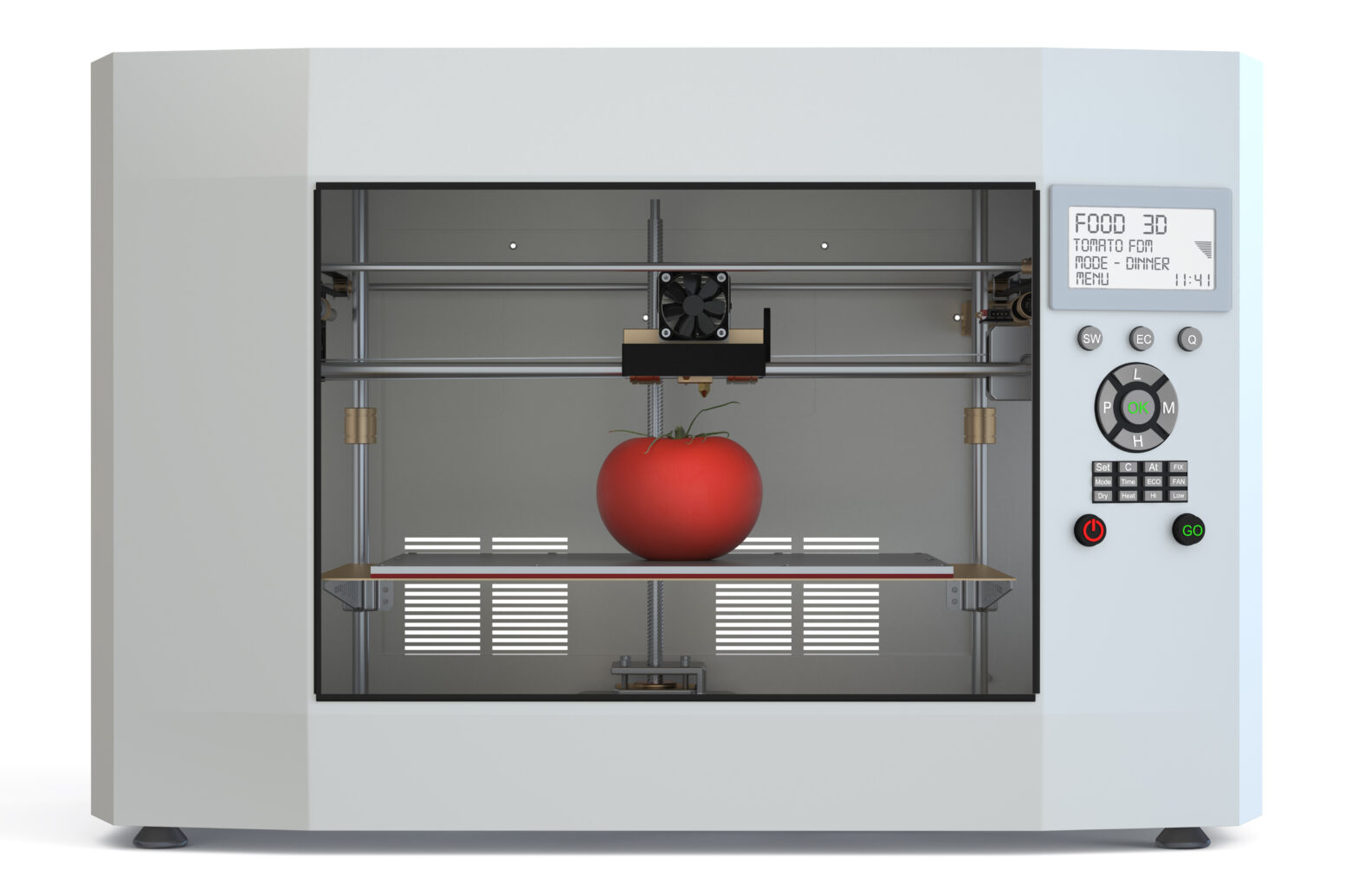Although it seems like 3D printed food sounds like the stuff of sci-fi, it’s become as real as any other item made using the technology. With the popularity of 3D printing increasing dramatically over the past few years, and its applications being relevant to everyone from school children to the SpaceX program, there’s no doubting the technology has ‘found its way’.
Many commentators have pointed to its potential uses in improving sustainability across a number of sectors; the founder of the largest 3D printer network provider recently told Wired that these uses could ‘include everything from [biomedical] tissue printing…to custom metal part production’. The sustainable benefits of 3D printing are obvious: custom, on-demand production of materials with a minimal generation of waste. Indeed, some companies have even found ways to transform waste plastics into the filament (the ‘ink’) which goes into 3D printed objects.
But the filaments for these printers can be made from almost any material imaginable, which has led to many forward-thinking technologists hitting upon the idea of 3D printing food. With 11 per cent of the world’s population affected by global hunger, this is a move which could have far-reaching consequences the world over.
How do 3D food printers work?
3D printed food as been on the menu since 2012, if only as a prototype. The way early versions of the technology produced food is not all that different from how food printing currently works: printed dots of liquid are spread into layers that are built up into finished components which, ingredient by ingredient, are constructed into meals. While originally the filaments for 3D food were simply made up of melted versions of the foods being made, the technology has since advanced to make use of algae and even insects, as well as food waste. This makes 3D printed food a sustainable alternative to some rapidly-depleting crops, as well as giving people access to all manner of recipes through open source technology.
It has been noted that the design of the printers themselves – such as being able to fit multiple filaments and having a variety of nozzle sizes – makes the process even more eco-friendly. The machine precision of these printers also reduces the need for artificial additives, as a result of the way the component layers are created. The evolution of this technology has piqued the interest of gastronomers, with the travelling pop-up experience Food Ink providing 3D printed food to paying customers who sit on printed chairs at printed tables.
Should we expect 3D food printing to change how we cook and eat?
While the technology is evolving towards market-readiness, it may take a while before the average consumer will be able to get their hands on it. Foodini, the market-leading brand of 3D food printer, costs around $4,000, and cheaper models offer a more limited capacity for ingredients.
However, much of the emphasis is currently on catering facilities rather than domestic kitchens, as they allow for a uniformity in preparation of ingredients. The BBC also explains that, while 3D food printers like Foodini aren’t as yet able to cook, part of its mechanism can heat ingredients such as chocolate to their optimal working temperature. This allows chefs to concentrate on other prep work, allowing for a faster turnaround for diners.
Business Insider also notes that layered foods such as pizza are considered ‘an obvious candidate for 3D printing’, with the component layers built up and (if need be) heated to an edible temperature as they are printed. The ingredients which go into each component part of the pizza – even the cheese – are powdered, which makes them easy to store; indeed, with a shelf life of decades, it’s no wonder that NASA has invested in 3D food printing for future space programs.
But while powdered pizza might be tasty, it’s not necessarily going to be nutritious; at the very least, you’re unlikely to be able to base your whole diet on it. However, other products such as Huel have also been touted as ‘the future of food’ for their convenience and nutritionally-complete ingredient list. This demonstrates that there are forward-thinking companies who are striving to improve the world’s food landscape in a way that relies less on expensive technology and more on the health of consumers.
But what about the bigger picture?
With the above in mind, using 3D printing to combat world hunger makes a great deal of sense; NASA’s interest and investment could herald a new surge in funding for these 3D food printing manufacturers. Whether by driving down the cost of the printers themselves, or broadening their availability (and that of printer-friendly ingredients) to allow local governments to afford a number of 3D food printers for poorer neighbourhoods, this technology could bring about the democratisation of food availability.
It may take time for 3D food printing to become the solution, but as a beacon of hope for those in poverty, and those trying to forge a sustainable future for food, this is very much a step in the right direction.





